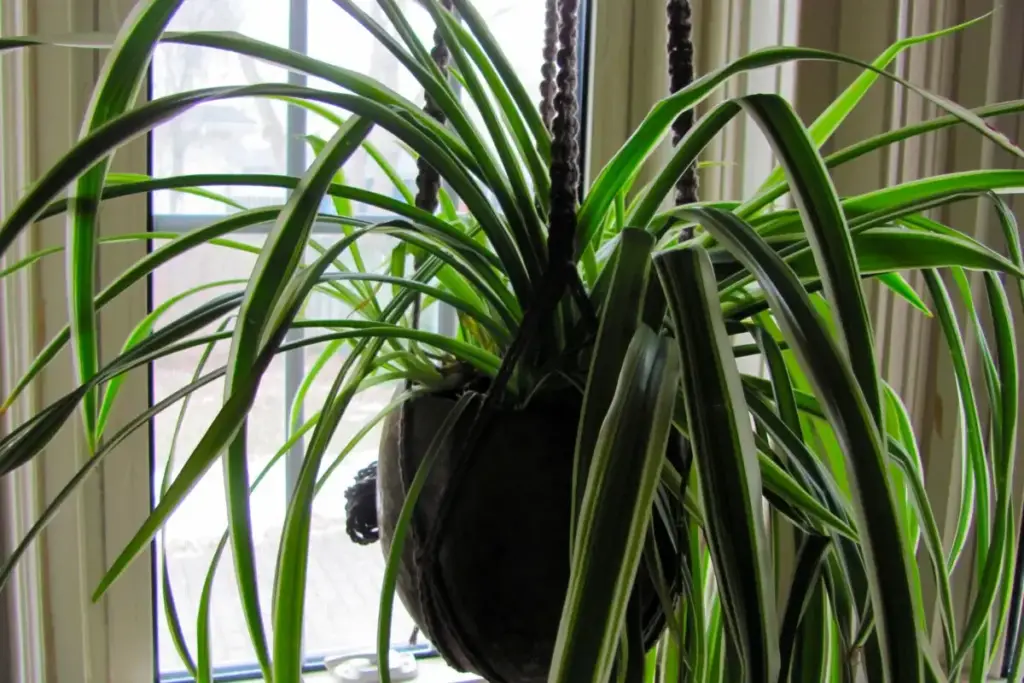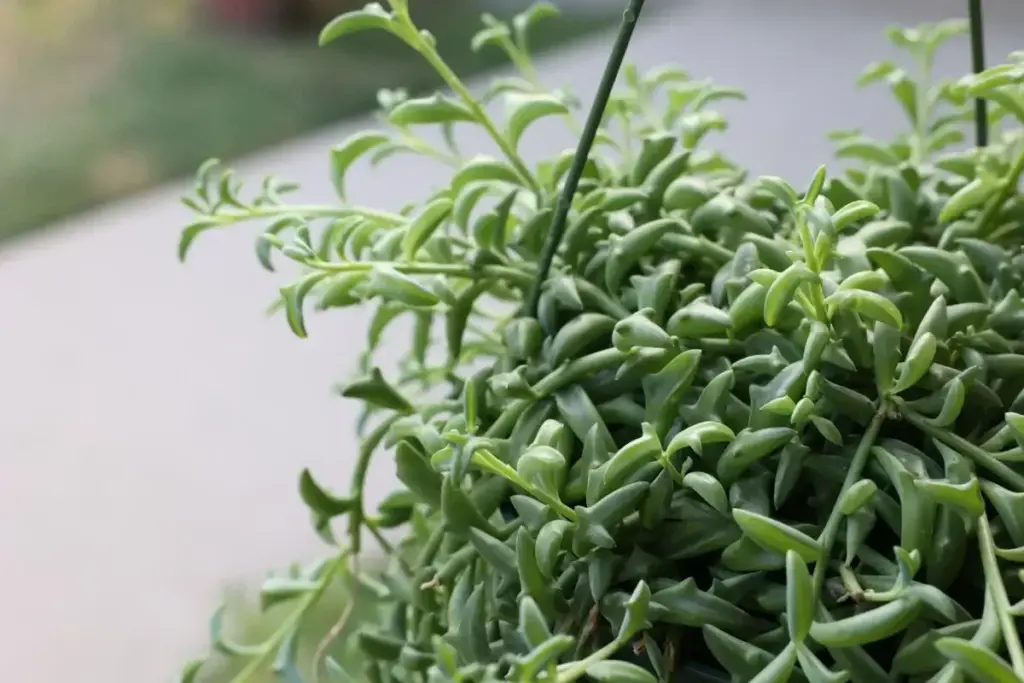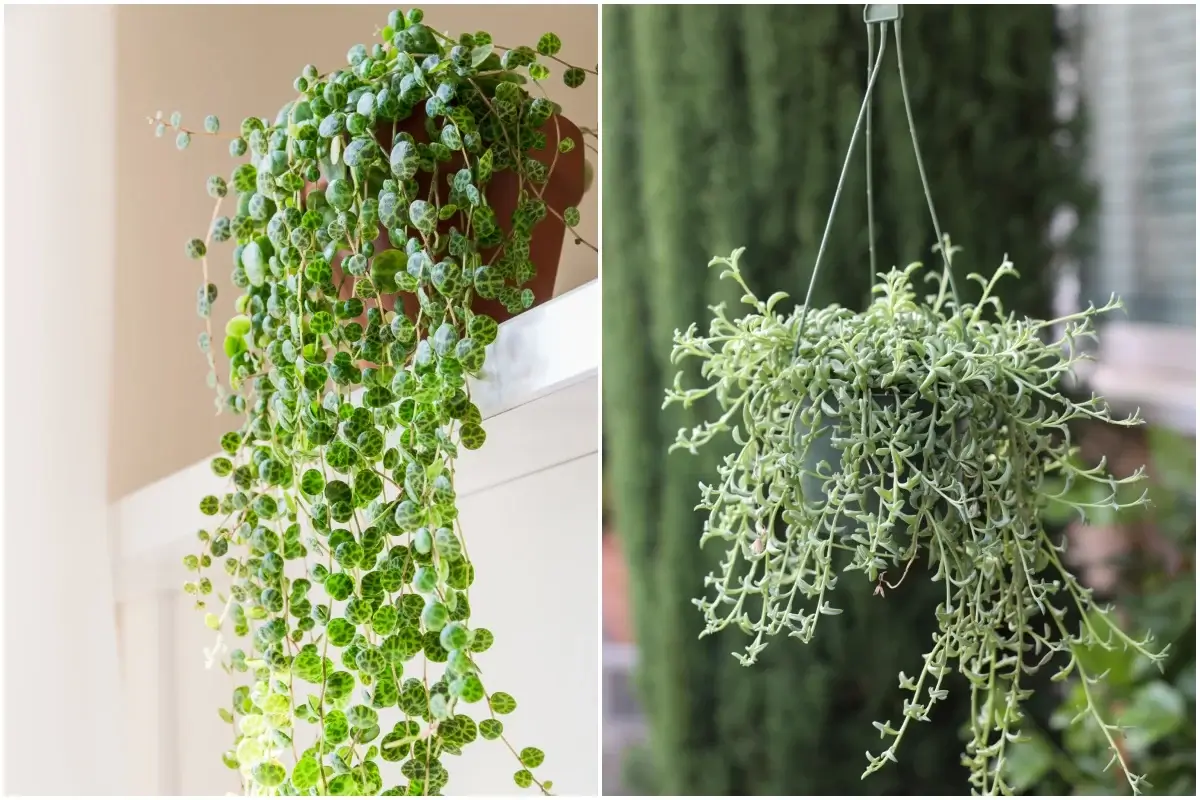You’re ready to take your indoor garden vertical. When windowsills and tables are already claimed, trailing plants help you expand upward and outward — and they look stunning doing it.
In this guide, you’ll discover some of the best cascading houseplants, tips to keep them happy, and how to display them beautifully.
Why Choose Trailing Plants?
Trailing plants are perfect for:
- Maximizing space — use ceilings, walls, shelf edges, and curtain rods
- Creating movement — vines and draping foliage bring visual flow
- Adding depth — layers of hanging greenery enrich your interior vibe
When displayed thoughtfully, these plants transform your room into a living, breathing space.
How to Display Your Trailing Plants
Before we dive into species, here are a few display ideas you’ll love:
- Macramé plant hangers — timeless, versatile, and comes in single or multi-tier styles
- Shepherd’s hooks or coat racks — a freestanding way to suspend plants near windows
- Wall-mounted plant sconces or half-moon shelves — great for adding dimension to walls
- Curtain rods or ceiling hooks — perfect for letting vines spill downward
Once your display is sorted, pick plants that thrive in hanging or cascading form.
Top 10 Trailing Houseplants (And How to Care for Them)
Here are ten excellent trailing plants to try. For each, you’ll get what they like most and how to care for them.
1. Pothos (Epipremnum spp.)
- Why it rocks: Tough, forgiving, and great in various light conditions.
- Care tips: Let soil dry slightly between waterings. Trim long vines to promote fullness.
- Display ideas: Let vines tumble over a pot or train them against a wall.
2. Spider Plant (Chlorophytum comosum)

- Why it works: Easy-to-care-for with dramatic, arching leaves.
- Care tips: Keep soil moderately moist and give bright indirect light.
- Fun bonus: It produces “spiderettes” (baby plants) that you can replant.
3. Heartleaf Philodendron (Philodendron hederaceum)
- Why it’s lovely: Heart-shaped leaves drape elegantly and densely.
- Care tips: Thrives in moderate light; water when top soil is dry.
- Tip: Prune back long vines if needed to keep it looking full.
4. English Ivy (Hedera helix)
- Why you might pick it: Classic vine that can cascade or climb.
- Care tips: Prefers bright, indirect light, cooler temperatures, and moderate watering.
- Display: Let it hang or guide it on frames or trellises indoors.
5. “String of” Succulents (e.g. Pearls, Dolphins, Hearts, Tears)

- Why they stand out: Striking textures and shapes — like beads or delicate chains.
- Care tips: High light, infrequent watering (let soil nearly dry).
- Varieties to try:
- String of Pearls (Curio rowleyanus)
- String of Dolphins (Curio × peregrinus)
- String of Hearts (Ceropegia woodii)
- String of Turtles (Peperomia prostrata)
6. Lipstick Plant (Aeschynanthus radicans)
- Why it’s special: Gorgeous tubular red blooms that peek from the foliage.
- Care tips: Bright indirect light, consistent moisture, and humidity help it shine.
- Display tip: Hang where blooms can show, and mist occasionally.
7. Button Fern (Pellaea rotundifolia)
- Why it’s great: More forgiving than many ferns — elegant but lower-maintenance.
- Care tips: Keep soil evenly moist, moderate light, avoid dry air.
- Placement: Hang in bathrooms or kitchens, or where humidity is higher.
8. Burro’s Tail (Sedum morganianum)
- Why it’s dramatic: Thick, trailing succulent strands full of plump leaves.
- Care tips: Bright light, very well-draining soil, water sparingly.
- Caution: Because leaves detach easily, keep it away from high-traffic zones.
9. Purple Heart (Tradescantia pallida)
- Why it adds flair: Bold, deep purple foliage that brings contrast to your green palette.
- Care tips: Bright light (some direct sun), allow soil to dry a bit between watering.
- Display style: Let long stems drape freely to highlight color.
10. Asparagus Fern (Asparagus densiflorus)
- Why it’s unique: Soft, feathery foliage that spills with a delicate texture.
- Care tips: Bright filtered light, moderate watering, slight dry-out periods.
- Note: If it looks sparse, trim back and it will reshoot fuller.
How to Care for Hanging / Trailing Plants
To help your trailing plants thrive:
| Care Aspect | Tip |
|---|---|
| Light | Bright indirect light is ideal for most; succulents need more direct sun. |
| Watering | Let soil dry partially before watering again — avoid soggy roots. |
| Humidity | Many trailing plants prefer humidity; occasional misting or a humidifier can help. |
| Pruning | Trim back overly long stems to maintain shape and encourage fullness. |
| Soil & Drainage | Use well-draining potting mix; ensure your containers have drainage holes. |
Your Vertical Jungle Starts Here
Trailing plants are your ticket to expanding greenery without needing more floor space. Whether you go minimalist with a few hanging pots or go full jungle with layered displays, these plants bring life, movement, and beauty into your home.
Call to Action
👉 Choose one trailing houseplant today, hang it where it can shine, and share this guide with a friend who loves houseplants. Let’s grow upward together — and turn your space into a lush, living display!
Would you like me to build an SEO-friendly title tag, Pinterest description, and keyword-optimized headings for this article next?
